Piolets d'Or Announces the "Significant Ascents" of 2023
This list of 68 climbs is effectively a "long list" used to select nominees of the prestigious alpine award.

Over 295 days in 2012 and 2013, Vanessa O'Brien climbed the highest peak on each continent, completing the feat known as the Seven Summits faster than any woman before or since. She is also one of the few people to have completed the Explorer's Grand Slam, which requires an individual to have climbed the Seven Summits and reached the North and South Poles. This feat took her just 11 months in total.
But her recent summit of K2, the "Savage Mountain," on July 28, 2017, means more to her than any her other adventures. She was the first American and British woman (she has dual citizenship) to successfully summit and descend K2, and the expedition represented a culmination of her career thus far–in the climbing world, the business world and beyond.
The Outdoor Journal conducted an email interview with O'Brien last week.
You’ve accomplished a lot in your climbing career, for example being the fastest woman to climb the Seven Summits. Where does your K2 summit rank amongst your accomplishments? Is it particularly special in any way?
The summit of K2 is by far the most important accomplishment I have achieved. Being fastest is great, except someone can always achieve a faster time later on. But no one can take a first away from you – whether you are the first women to represent a nation (or two!), or the first to climb an unclimbed peak, or even the first to establish a new route on an existing peak. That is yours to keep.
When you accomplish something like this it gives one a sense of pride, especially when the numbers are so low. For example, I am the 20th woman to summit K2 in the world. Also, when the task is so hard. For me, it took three years to achieve the summit of K2, and there were no summits on K2 at all in 2015 and 2016. Add to that what I had to endure to get to the summit seems like the ultimate endurance test - 50 km winds, 40 below temperatures, and increasing precipitation with threats of avalanche and crevasse danger for 23 hours.
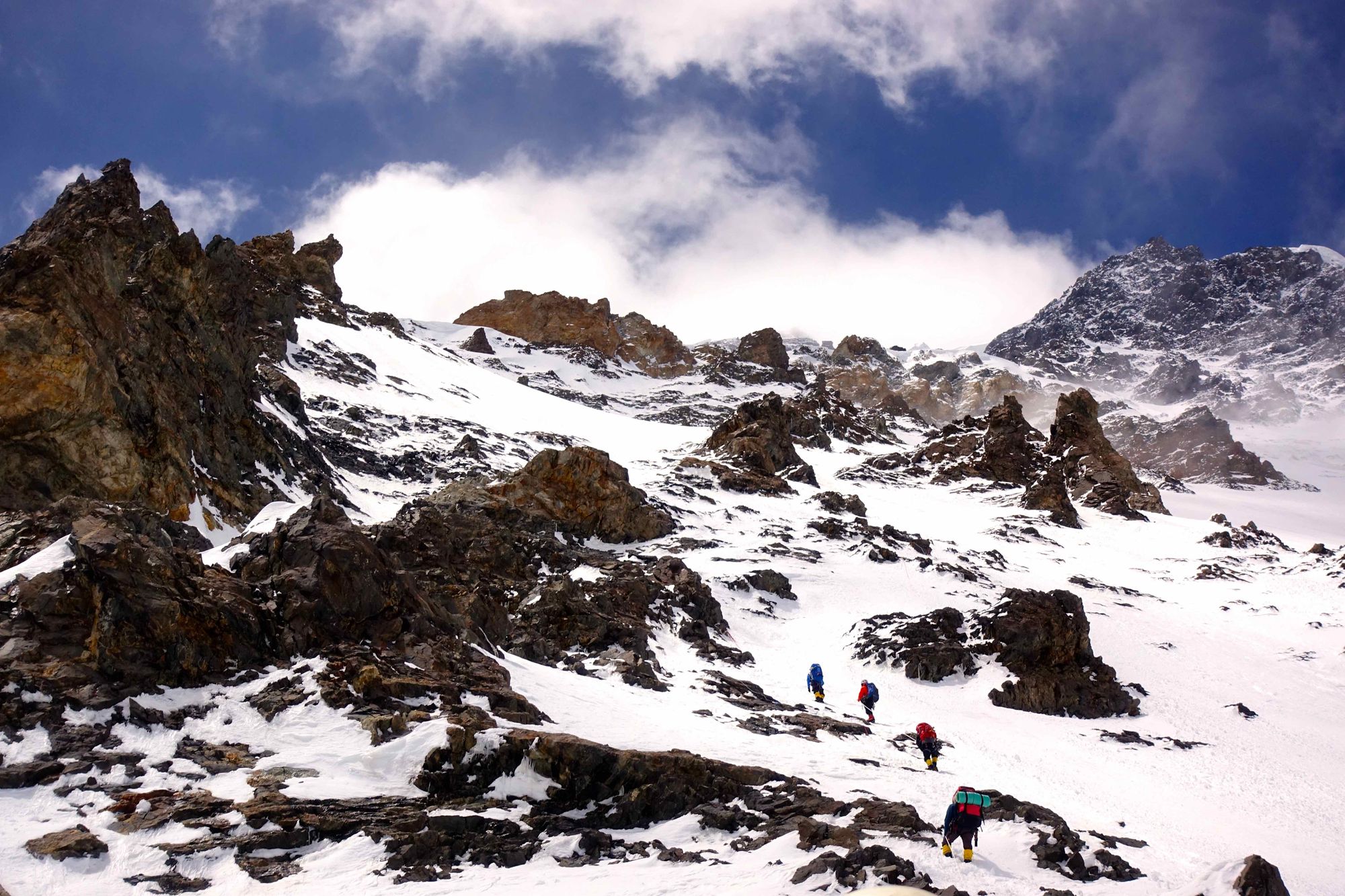
You’re the first American and British woman to summit K2 and make it down alive. What is it about being the first, and breaking down barriers, that is so appealing?
What is appealing for me is first to prove that I can. That I can take all of the training, experience, hard work and determination and turn it into results. But then extrapolate it. If I can, then that means others (especially women) can, too.
High altitude mountaineering is quite unique. Where oxygen is a limited resource, cardiovascular strength becomes much more important than muscular strength. Because expeditions take 6 to 8 weeks, muscular strength will weaken during that time, but mental strength must remain strong. So a durable cerebral focus combined with a solid cardio base makes this a great sport for women as well as men.
What was the lead-up to this expedition like? Different from the Seven Summits? K2 is serious in a different way.
K2 is very different than the Seven Summits and other 8,000m peaks because if you want to book any of those there are a number of expedition leaders offering pre-planned trips to these peaks.
K2 does not have that kind of consistency. One reason is because there is a 40% chance in any one year of no summits (based on 13 years of no summits since 1986). So no tour operator is going to be commercially successful going every year reporting "no summits." And no climber is going to want to follow an expedition leader who isn’t successful more than two years in a row.
Furthermore, local logistics are not easy from the start. It is not easy getting visas to/from some countries to Pakistan, getting tickets or even PIA [Pakistan International Airlines] flights which may or may not fly because of bad weather in Skardu, leaving many expeditions to travel by road from Islamabad. Hiring the right number of qualified high and low altitude porters can also be tricky with supply and demand. So you need a really good local logistics operator.
There is a lot of pre-planning that needs to take place 9 months ahead of an expedition to K2 because of its location. Knowing your expected team, the number of Sherpa, how much oxygen you plan to import, and finding the right local operator like Nazir Sabir Expeditions (who I used) is crucial to getting your climbing permits and sorting out local logistics including sourcing local staff and arranging low altitude tents, food, supplies and equipment (like solar panels and generators).
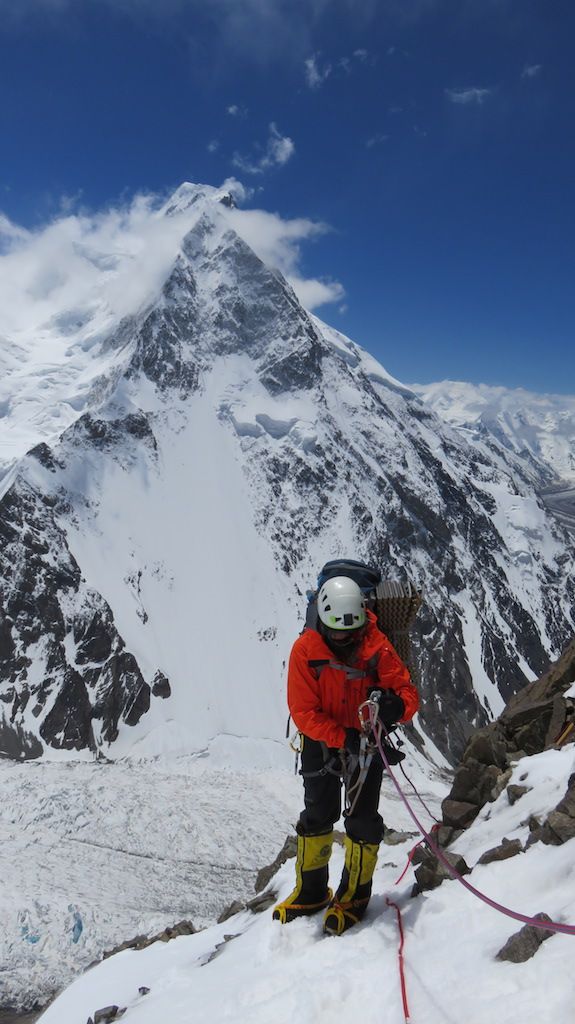
No other teams reached the summit this season. Did you and your expedition members simply push harder? Risk more? Climb smarter? What allowed your team to succeed where others didn’t?
First, not all teams were on the same route. Some teams were climbing the Cesen Route and others were climbing the Abruzzi Route. Conveniently both routes converge at Camp 4 where teams can proceed climbing (and fixing) to the summit together.
However, as the summit window approached this year, the Cesen teams were not quite as high on their route as they needed to be to capture the summit window, so they turned around. The Abruzzi teams also faced terrible weather around Camp 2 that split the climbing teams – some stayed an extra night and waited it out, some went down (never to come back up), and others just ploughed ahead to Camp 3.
I stayed an extra night and still met terrible weather the next day climbing up to Camp 3, but even then, that next day – the rest of the climbing teams turned around because the weather was still that bad. If anyone has seen any of the video you can understand why and I applaud them for choosing safety first. The answer is that we risked more.
The weather continued to be unpredictable and gave us surprises on our summit day. Unbelievably despite going through the worst weather up to the summit – it was a pure bluebird day on top. That is why I always referred to the summit bid as going through Dante’s Inferno. It was as if every 100 meters of those final 1,000 meters on summit day represented a ring of hell that one had to pass to get to heaven.
But this year our team was exceptionally experienced – experienced with cold, crap weather and 8,000m peaks (each had climbed five to thirteen 8,000m peaks) – and each was willing to take on the additional risk. We had to fix safety lines simultaneously while climbing to the summit and that took time. We made a conscious decision to continue knowing the consequences of increased avalanche risk with increased precipitation and having to descend in the dark.
This was your third attempt on K2. What kept drawing you back? Were you determined to get to the top no matter what? If you hadn’t made it this time do you think you would have come back for a fourth try?
El Niño was the reason our climb was not successful in 2015 – it was simply too unseasonably warm and we could only progress to Camp 2. Rock that should have been frozen to the Earth became unfrozen and added to the complexity of climbing that year, unleashing large boulders down the mountain and creating objective hazards. We had two climbing accidents due to rock fall that year.
An unexpected avalanche at Camp 3 stopped our climb in 2016, as it swept away all tents, oxygen, equipment and supplies for all teams. While there was no injury or loss of life, it left expeditions low on supplies and morale too low to continue on.
However, progressing from Camp 2 to Camp 3 year over year gave one hope that progress could be made. However, to answer your question, this year I would not seek the summit no matter what. I know summit fever is a real disease, and of course how is one ever sure if one has it? But even on our summit bid this year as I watched the snow accumulate, I was busy calculating at what frequency the snow was building up versus the pace we were climbing at and the distance we were covering to determine if and when to pull the plug (and turn around) – as were others.
Our website was called K2-The Final Conquest so I am not sure I would have come back a fourth time. There is something about three strikes you’re out in sports that is metaphorically a nice place to stop and, financially, it just wouldn’t have been feasible.
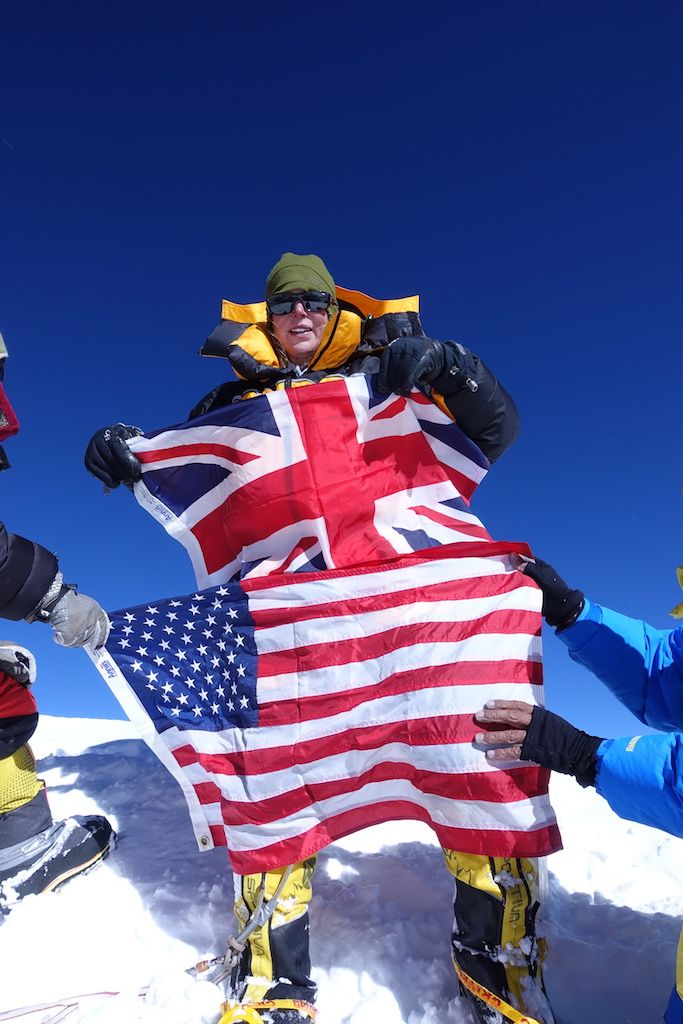
You were dealing with multiple nagging injuries before the climb. Did they affect you at all during the ascent?
Good point. Injuries are real. The reality is when there are bigger things to worry about like overall survival, they tend to take a back seat. I only felt existing injuries on the way in during the 100 kilometer trek from Askole to K2 Base Camp, and on the way out during a fast track route over the Gondogoro Pass, a 5,585-meter high mountain pass.
Were there any particularly scary or worrisome moments in the climb? Any moments of doubt where you thought you should turn back?
Lots of them! I really don’t like crampons on rock, but unfortunately K2 is a mixed climb. Going up House’s Chimney or the Black Pyramid is never fun for me. Down is fine – that’s a simple rappel. But up is a matter of finding foot placement, squeezing through places or small ledges with a big backpack that throws you off balance - all things I would happily do with rock climbing shoes on, but with crampons it is another story, very much like fingernails on a chalkboard. These were fast, heart-beating scary moments.
However, on summit day my scary moments were slow and building, like watching suspense build in a film. I was simply watching the snow pile up knowing we were moving at a snail’s pace and wondering what this was going to be like coming down. That anxiety was pumping through my veins all the way to the summit. I was constantly wondering whether we should turn back. This is the first summit I spent the entire summit bid questioning whether to turn back, and of course, even the summit itself is only halfway.
You used to work in the financial services industry. What ways did the skills you learned transfer to the world of climbing mountains? Leading expeditions?
Almost everything I learned in business transferred nicely to leading or being part of an expedition. You need leadership skills to make decisions and provide direction or even cast a vote, and you need to be a team player because climbing as a solo pursuit really exists for only a few. Morale gets low pretty quick when bad weather sets in and changes your plans, so you need to chip in with a few films, games and jokes. Operational efficiency and risk management are key. Obviously you don’t want the slower folks climbing first as that will slow down the whole team, and having two teams putting in fixed lines and "leap frogging," gets things done faster. That kind of thing.
I have, however, come across situations that I could not lead or manage myself out of. One is superstition. If a climber believes the mountain is a God or a God lives at the top of the Mountain and has "spoken" (meaning that there shall be no more climbing), then there is no rational argument I can deploy that will reverse this school of thought or money that I can throw at the problem.
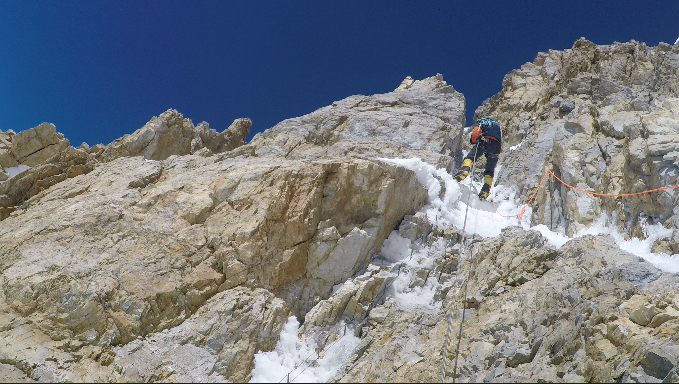
I have also come across short-term solutions that are bad in the long term. For example, I have been held by villages wanting employment, i.e., a villager wants a job on the expedition and refuses to let us go until he is given one. So I create a job carrying my backpack, he is employed, and we go on our way. This is a great short-term solution that is bad in the long term (i.e., locals should not be encouraged to continue this type of behaviour).
Climbing K2 is an expensive proposition. The Everest industry gets a good deal of criticism these days for taking inexperienced climbers up the mountain simply because they can afford it. Do you worry about K2 and other big mountains following that path? If not, why do you think it’s different?
Russell Brice and Himalayan Experience was the first to set a standard saying he would not take anyone who hadn’t summited Everest plus at least one other 8,000m peak to K2. I suggest doubling that or someone will just waste their money.
K2 does get a lot of independent experienced climbers, who often show up under-resourced waiting for the larger expeditions to put in the fixed lines and share weather reports. If these smaller teams contribute (and many do) with money and rope carry, everything is fine. But one day the large expeditions won’t be there and then what?
To some extent high altitude mountaineering is a game of numbers as fixed costs are lowered by more people. So you need a certain amount of people to make an expedition economical. If there are too many expeditions overall then it can become dangerous because every mountain has bottlenecks. The more expeditions there are on the mountain, the more likely they will converge to “Group think.” Deep down inside, sometimes a climber is looking for an excuse to go home and “Group think” will provide this, because it will suddenly become all too difficult. If inexperienced people come to K2, they will either end up at the Gilkey Memorial or have such a terrible time they will never come again.
Now that K2 is checked off the list, what's next?
I have always wanted to go to the Mariana Trench – deeper than Everest is tall, at 36,000 feet; or be part of a team to find the ship’s bell on Shackleton’s ship, Endurance, located in Antarctica.
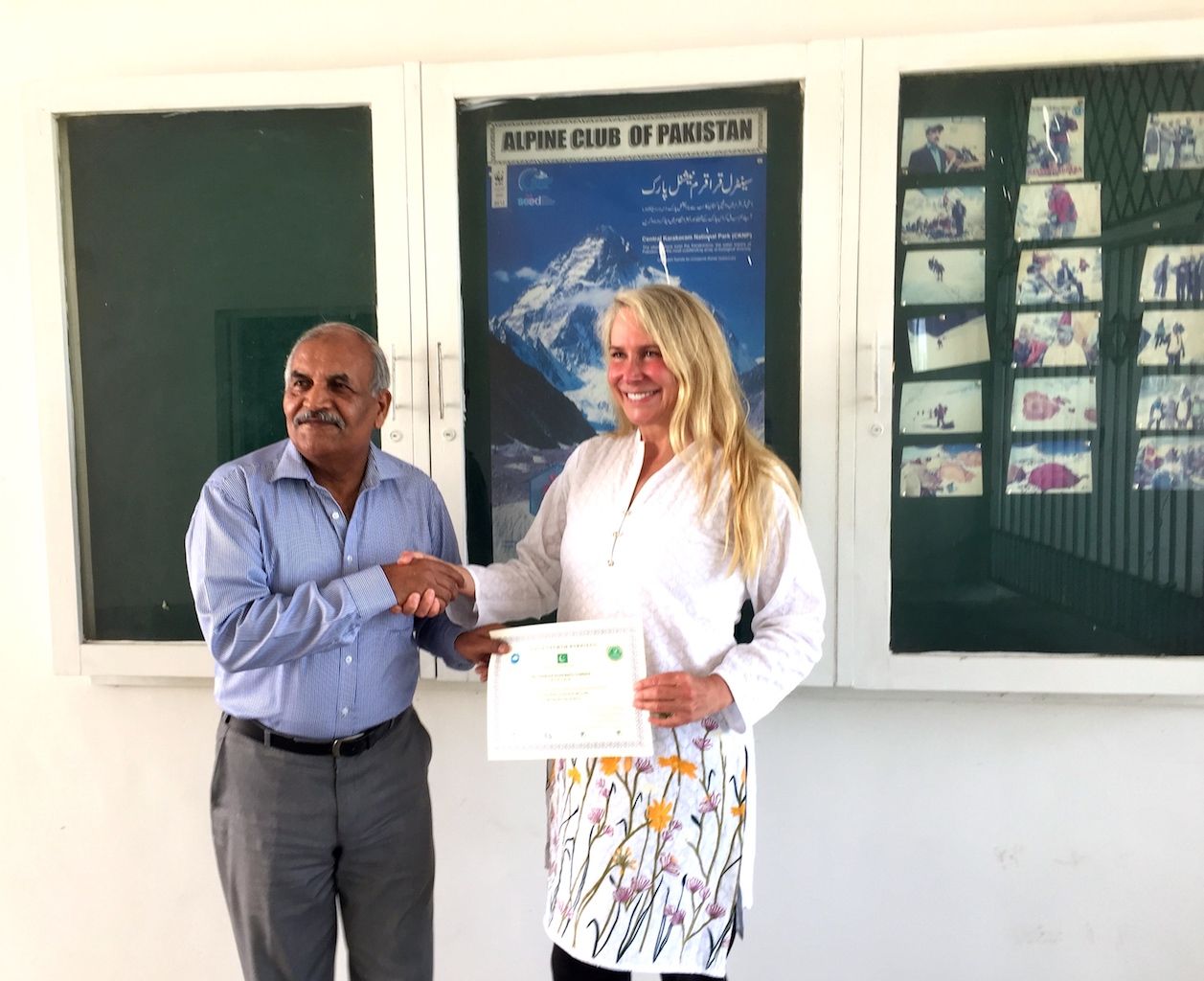
Want to have a climbing adventure of your own? Check out The Outdoor Voyage and book your next trip.
Feature Image: One of the camps pitched by O'Brien's expedition team on K2. Photo: Courtesy of Vanessa O'Brien.
2nd best newsletter in the universe